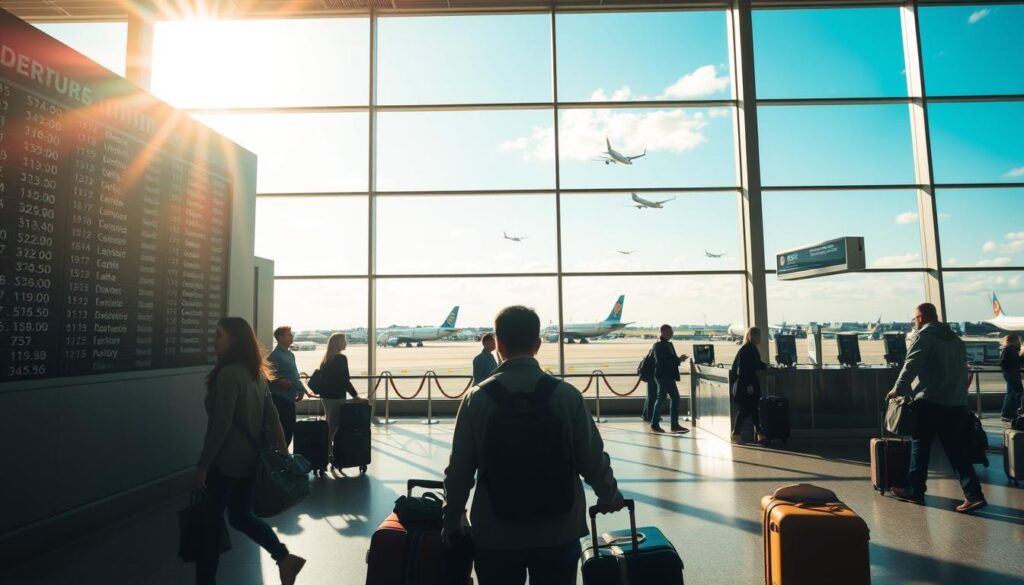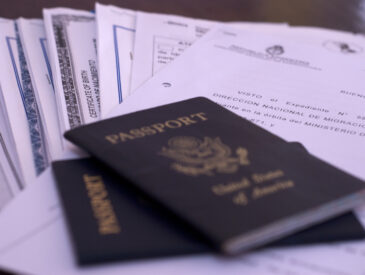Traveling can be expensive, especially when it comes to airfare. However, with the right strategies, you can significantly reduce costs and secure the best deals. This guide will walk you through expert tips to help you learn how to find cheap flights and make your next trip more affordable.
Master the Flight First Rule
The Flight First Rule is a game-changer for budget-conscious travelers. This strategy involves booking your flight before making other travel arrangements. By prioritizing airfare, you can allocate more of your budget to accommodations, activities, and dining.
- Why it works: Airfare prices fluctuate more than hotel or activity costs, so locking in a cheap flight early ensures you save money upfront.
- Pro tip: Use tools like Google Flights to compare prices and set fare alerts for your desired routes.
Be Flexible with Dates and Destinations
Flexibility is one of the most effective ways to learn how to find cheap flights. Adjusting your travel dates by just a day or two can lead to significant savings.
- Best days to fly: Tuesdays and Wednesdays are typically cheaper than weekends.
- Alternative airports: Consider flying into or out of smaller airports near major hubs like New York or Chicago.
- Off-peak travel: Flying during shoulder seasons (spring and fall) can save you money and help you avoid crowds.
Use the Right Tools to Compare Prices
Leveraging the right tools can make a huge difference in finding affordable airfare.
- Google Flights: Offers a calendar view to compare prices across dates and set fare alerts.
- Momondo: Aggregates prices from multiple airlines and travel agencies, ensuring transparency.
- Skyscanner: Great for finding deals on budget airlines and multi-city itineraries.
Book Within the Goldilocks Window
Timing is everything when it comes to booking flights. The Goldilocks Window refers to the ideal period for booking—not too early, not too late.
- Domestic flights: Book 1-3 months in advance.
- International flights: Book 2-8 months in advance.
- Last-minute deals: While rare, last-minute flights can sometimes be cheaper, especially for off-peak destinations.
Maximize Savings with Points and Rewards
Credit card rewards and frequent flyer programs can help you save big on airfare.
- Travel rewards cards: Earn points or miles on every purchase, which can be redeemed for flights.
- Airline loyalty programs: Join programs like Delta SkyMiles or United MileagePlus to earn free flights and upgrades.
- Sign-up bonuses: Many credit cards offer lucrative sign-up bonuses that can cover the cost of a round-trip ticket.
Flexible Dates, Destinations, and Routes
Flexibility is your greatest ally when searching for affordable airfare. Shifting your travel dates by just a day or two can lead to substantial savings. Consider flying on Tuesdays or Wednesdays, as these are typically the cheapest days.
Exploring alternative destinations or routes can also help. For instance, flying into a nearby airport might offer a cheapest flight option. Multi-city itineraries or stopovers can sometimes cost less than direct flights.
Here are some actionable tips to maximize your savings:
- Use fare comparison tools to explore multiple options.
- Be open to adjusting your travel dates for better deals.
- Consider nearby airports or alternative routes.
- Set fare alerts to catch price drops.
By applying these strategies, you can save money without compromising your travel plans. Remember, a little flexibility goes a long way in securing the best airfare deals.

Choosing the Best Tools for Flight Searches
Finding the right tools can make flight searches effortless and cost-effective. With so many options available, it’s essential to know which platforms offer the most value. Two standout tools are Google Flights and Momondo, each designed to simplify the booking process.
Google Flights: Your Primary Search Engine
Google Flights is a powerful search engine that helps you locate the best flight deals quickly. Its intuitive interface allows you to filter results by price, duration, and stops. The calendar view is particularly useful, showing fare trends over multiple dates.
For example, if you’re planning a trip to New York, Google Flights can highlight the cheapest days to fly. It also provides alerts for price drops, ensuring you never miss a great deal. This tool is ideal for travelers who value simplicity and efficiency.
Exploring Momondo and Other Aggregators
Momondo is another excellent option for comparing fares across multiple airlines and travel agencies. Unlike some platforms, it doesn’t include hidden fees, making it a transparent choice for budget-conscious travelers. Its colorful interface and detailed filters make it easy to find the perfect flight deal.
Aggregators like Momondo are especially useful for international trips. They often uncover routes and airlines you might not have considered. For instance, flying into a nearby airport instead of a major hub like New York can save you money.
Here’s how to maximize these tools:
- Use Google Flights for quick searches and fare alerts.
- Explore Momondo for comprehensive comparisons and hidden gems.
- Check fare differences for popular destinations like New York.
- Set up alerts to stay updated on price changes.
By leveraging these tools, you can simplify the decision-making process and secure the best flight deals. Whether you’re booking a domestic trip or an international adventure, these platforms are invaluable for smart travelers.
Best Time and Strategy: Booking Within the Goldilocks Window
Timing is everything when it comes to securing the best airfare deals. The concept of the Goldilocks Window refers to the ideal period for booking flights—not too early, not too late, but just right. Booking within this window can save you significant money and ensure you get the best value for your trip.

For domestic flights, experts recommend booking 1-3 months before departure. This timeframe allows airlines to finalize their schedules while still offering competitive fares. International flights, on the other hand, should ideally be booked 2-8 months in advance. This longer window accounts for higher demand and fluctuating prices.
Domestic vs. International Booking Tips
When planning a domestic trip, flexibility is your best friend. Shifting your travel dates by just a day or two can lead to substantial savings. For example, flying on a Tuesday or Wednesday often results in lower fares compared to weekends.
International travel requires a different approach. Booking well in advance is crucial, especially for popular destinations like New York or Paris. Additionally, consider flying during off-peak seasons to avoid inflated prices. Regularly checking fare alerts can help you catch price drops and secure the best deals.
Here’s a quick guide to booking within the Goldilocks Window:
| Flight Type | Recommended Booking Time | Tips |
|---|---|---|
| Domestic | 1-3 months before departure | Be flexible with dates and check mid-week flights. |
| International | 2-8 months before departure | Book early, especially for peak destinations. |
Using a credit card with travel rewards can further enhance your savings. Many cards offer points or cashback on flight purchases, making it easier to stretch your budget. By understanding the Goldilocks Window and applying these strategies, you can plan your trips with confidence and fiscal efficiency.
Travel Smart: Alternative Routes and Positioning Flights
Exploring alternative routes can transform your travel experience while saving money. By considering positioning flights and stopovers, you can unlock hidden opportunities to reduce costs and add more destinations to your itinerary. These strategies are especially useful for travelers who value flexibility and adventure.
Benefits of Stopovers and Multi-City Tickets
Stopovers and multi-city tickets are excellent ways to maximize your trip. Instead of flying directly to your destination, you can break up your journey with a layover in another city. This not only lowers the total cost but also allows you to explore an additional destination.
For example, a traveler flying to New York might book a multi-city ticket with a stop in Chicago. This approach often costs less than a direct flight and provides an extra travel experience. Many airlines even offer free or low-cost stopovers in their hub cities, making this a smart choice for budget-conscious travelers.
Optimizing Positioning Flights for Extra Savings
Positioning flights involve booking a separate flight to a major hub to access cheaper international fares. For instance, flying from a smaller airport to a hub like New York can significantly reduce the cost of an overseas trip. This strategy works best when combined with fare comparison tools and alerts.
Setting up alerts on platforms like Google Flights or Momondo can help you track deals for positioning flights. Flexibility in choosing airports or transit points near major destinations can also lead to substantial savings. By thinking creatively about your route, you can enhance your trip while staying within budget.
Here are some tips to make the most of alternative routes:
- Consider multi-city tickets to explore additional destinations.
- Use fare comparison tools to find the best deals on positioning flights.
- Set up alerts to stay informed about price drops.
- Be flexible with your departure and arrival airports.
By embracing these strategies, you can turn your next trip into an affordable and unforgettable adventure. Alternative routes are not just about saving money—they’re about making your journey more enriching and enjoyable.
Maximizing Savings with Points, Alerts, and Budget Airlines
Smart travelers know that combining tools and strategies can lead to significant savings on airfare. By using fare alerts, leveraging credit card rewards, and exploring budget airlines, you can stretch your travel budget further. These methods are especially useful for frequent flyers and those planning multiple trips.

Utilizing Fare Alerts and Credit Card Rewards
Fare alerts are a game-changer for catching price drops and special deals. Platforms like Google Flights and Momondo allow you to set up notifications for specific routes. When prices drop, you’ll be the first to know, giving you the chance to book at the lowest rate.
Credit card rewards programs are another powerful tool. Many credit cards offer points or cashback on travel purchases. For example, some cards provide bonus points for booking flights, which can be redeemed for free or discounted tickets. Joining a travel rewards program can amplify these benefits, offering exclusive deals and extra savings.
Here’s how to make the most of these strategies:
- Set up fare alerts for your desired routes and dates.
- Use a credit card with travel rewards to earn points on every purchase.
- Join a travel membership program for access to exclusive deals.
Navigating Budget Airlines and Additional Fees
Budget airlines can offer incredible savings, but it’s essential to understand their fee structures. While base fares are often low, additional charges for baggage, seat selection, and in-flight meals can add up. Comparing these fees across airlines ensures you get the best value.
For example, some budget carriers offer competitive prices for short-haul flights, making them ideal for domestic travel. However, for longer trips, it’s worth weighing the cost of extras against the convenience of full-service airlines. Always double-check the total price before booking to avoid surprises.
Here are some tips for flying with budget airlines:
- Compare total costs, including fees, before booking.
- Pack light to avoid baggage charges.
- Bring your own snacks to save on in-flight meals.
By combining fare alerts, credit card rewards, and smart choices with budget airlines, you can turn your next trip into an affordable adventure. These strategies are not just for frequent travelers—they’re for anyone looking to save money and travel smarter.
Avoiding Common Pitfalls and Debunking Booking Myths
Navigating the world of flight booking can be tricky, especially with so many myths and misconceptions floating around. Understanding the truth behind these myths and avoiding common pitfalls can save you time, money, and frustration. Let’s clear up some of the most persistent misconceptions and explore the limitations of Online Travel Agencies (OTAs).
Clearing Up Misconceptions on Booking Rules
One of the most widespread myths is that booking on a specific day, like Tuesday, guarantees the lowest flight price. In reality, airline pricing is dynamic and influenced by demand, seasonality, and competition. There’s no magic day to book—prices fluctuate constantly.
Another common belief is that airlines track your searches and raise prices if you look repeatedly. This isn’t true. Airlines use complex algorithms to set prices, and clearing cookies or using incognito mode won’t affect the flight price. Instead, focus on monitoring trends and setting fare alerts to catch the best deals.
Understanding OTA Limitations and Extra Costs
While OTAs can be convenient, they often come with hidden fees and less flexible customer service. For example, some OTAs charge extra for seat selection or baggage, which can add up quickly. Additionally, resolving issues like flight changes or cancellations can be more challenging when booking through a third-party company.
Booking directly with airlines often provides better customer service and higher reliability. For instance, if your flight is delayed or canceled, the airline can assist you directly, whereas an OTA might require additional steps. Always read the terms carefully and compare deals across different platforms to avoid unnecessary extra charges.
Here are some practical tips to avoid common pitfalls:
- Set fare alerts to monitor flight price changes.
- Book directly with airlines for better customer service.
- Compare deals across multiple platforms to find the best value.
- Be skeptical of “secret” hacks that promise guaranteed savings.
By staying informed and understanding the limitations of OTAs, you can make smarter booking decisions and avoid unnecessary expenses. Remember, a little research goes a long way in ensuring a smooth and cost-effective travel experience.
Conclusion
With the right approach, saving on airfare becomes an achievable goal. Flexibility is your best option, whether it’s adjusting your departure dates or exploring alternative routes. Tools like Google Flights and fare alerts can help you spot the best deals, even for last-minute trips.
Remember, booking on a Tuesday or Wednesday often leads to lower prices. Avoid common myths, like thinking airlines track your searches. Instead, focus on reliable strategies and tools to make your booking economical.
Start planning your next trip today. With the right tools and timing, you can save money and travel smarter. Every traveler has the option to make their journey more affordable—just take the first step!
FAQ
What’s the best way to save on airfare?
Flexibility is key. Adjust your travel dates, consider alternative airports, and use tools like Google Flights or Momondo to compare prices.
When is the ideal time to book a flight?
For domestic trips, aim for 1-3 months in advance. For international travel, 2-8 months ahead often yields the best deals.
How can I find the cheapest days to fly?
Tuesdays and Wednesdays are typically the most affordable days to travel. Avoid weekends and holidays for lower prices.
Are budget airlines worth it?
Yes, but be mindful of extra fees. Budget carriers like Spirit or Ryanair can save you money if you pack light and avoid add-ons.
How do fare alerts work?
Sign up for alerts on platforms like Google Flights or Skyscanner. They notify you when prices drop for your preferred routes.
Can credit card points help reduce flight costs?
Absolutely. Many cards offer travel rewards or points that can be redeemed for airfare, upgrades, or other perks.
What are positioning flights?
These are flights to a hub airport where you catch a cheaper international flight. They can save you money on long-haul trips.
Are multi-city tickets a good option?
Yes, especially if you’re visiting multiple destinations. They often cost less than booking separate one-way tickets.
Should I avoid booking through third-party sites?
Not always, but be cautious. OTAs can offer deals, but direct bookings with airlines provide better customer service if issues arise.
How do I avoid hidden fees?
Read the fine print before booking. Check baggage policies, seat selection costs, and other potential add-ons to avoid surprises.




